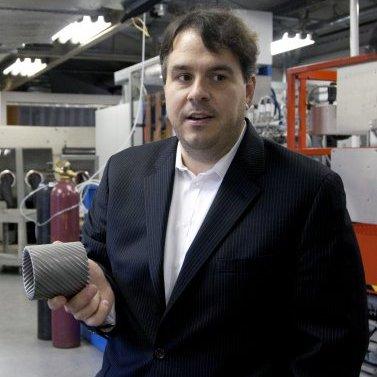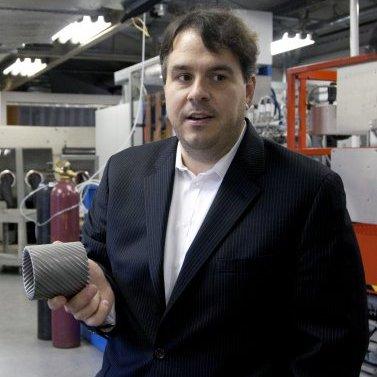May 7, 2012

The US Army's Advanced Materials Lab (AML) is working on using structured reactive materials (SRMs) to replace inert materials in the design of artillery shells. The idea is to make the shells more destructive.
A typical artillery shell explodes and breaks apart, sending fragments out in all directions at a high speed to wreak destruction. But the Department of Defense (DoD) says AML engineers at Picatinny Arsenal, the Army's ammunition and weapons center, want to use SRMs to build the entire fragmentation warhead (or frag, in military shorthand), not merely as part of the shell. This design has the potential to make the warheads 500 percent more lethal, because the fragments they send out will flare and burn, releasing both chemical and kinetic energy.

SRMs are a new class of materials the military is exploring to bolster the effectiveness of frags. Like insensitive high explosives, these materials are usually composed of two or more nonexplosive solid materials that don't react until acted upon by a strong mechanical, electrical, or laser stimulus.
Paul Redner, a materials engineer with the AML, said in an article published on the Army's Website that one of the benefits of designing frags with SRMs is the ability to increase destructive power without requiring more material. Unlike other reactive materials, "SRM will be a direct one-to-one replacement of inert components."
According to the DoD, the Picatinny lab is a good place to experiment with these types of materials, because of its focus on the development of nanomaterials. The lab itself was established to transition viable new nanotechnologies -- a focus of research across the military and other government labs -- to full-fledged development programs.
Creating shells with the new materials is a work in progress and comes with its technical challenges. The DoD said engineers are struggling with how to process components to form more complex shapes, among other things. The AML is working with other military researchers, including the Office of Naval Research, to overcome these and other issues with the use of the new materials.
Related posts:
About the Author(s)
You May Also Like



